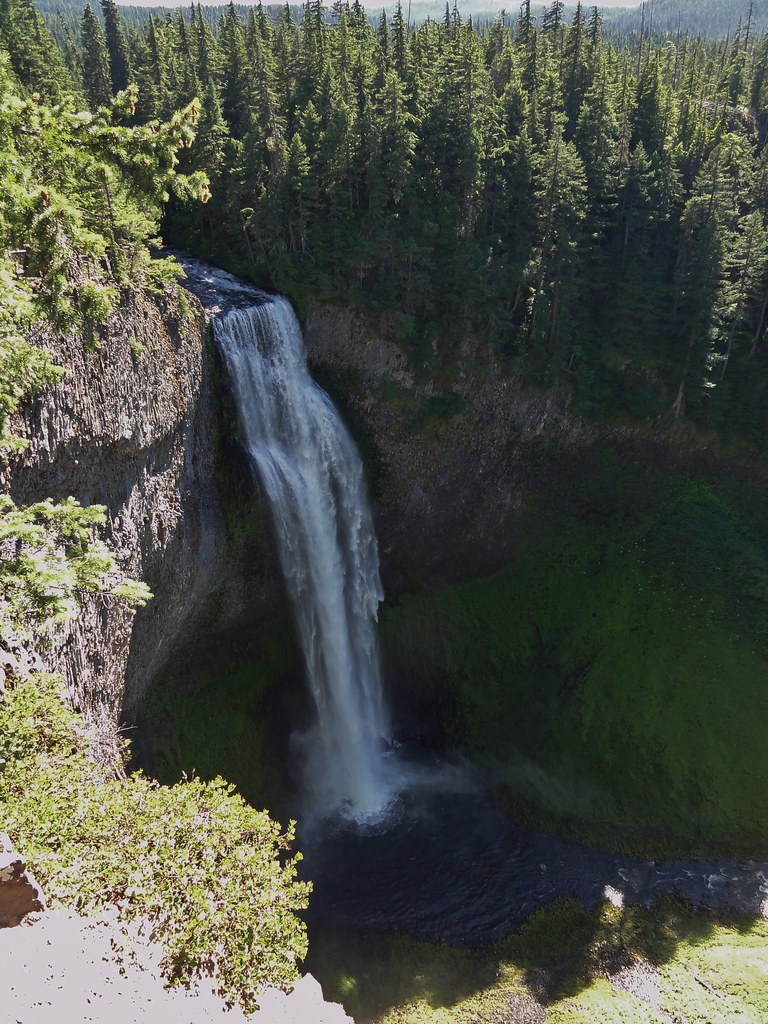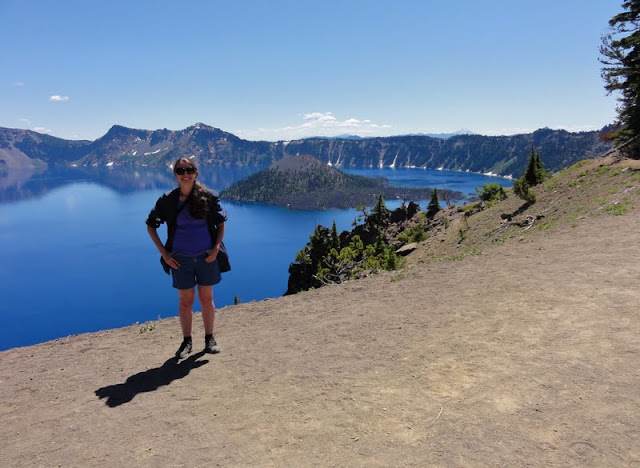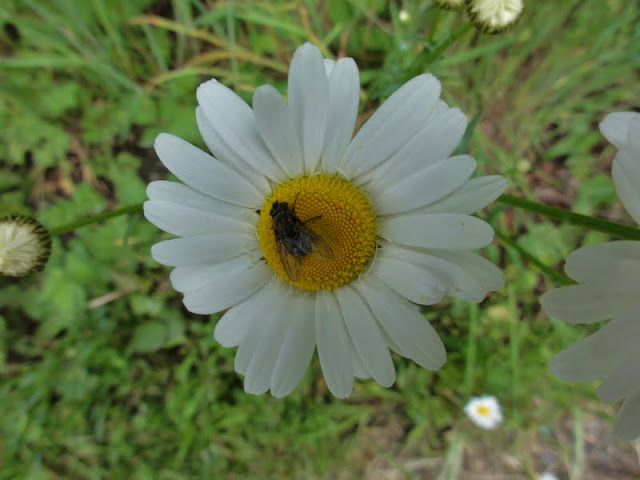One of the beautiful things about OMSI is the
Paleontology Lab. This is a place where a mere rope stands between you and delights like this:
 |
| Triceratops in jacket - snazzy! |
I believe they're freeing a triceratops from its matrix of rock. Again, the distractions of friends kept me from paying as much attention to the details as I might have done (no complaints about that!), but one can absorb quite a bit snapping a few photos and drooling over a few touchable displays.
Here's something I adored:
 |
| Spike! |
Okay, so it's not real. It's a resin cast. But it was taken from an
actual stegosaurus, and stegosaurus is cool. The fact the tail spikes are called
thagomizers because of a Far Side cartoon is fucking
awesome. I got to touch a cast of a thagomizer, people. That tickles me right down to me toes.
I've always liked the Steg. Other kids in my grade-school class went in for T-Rex, but I figured a dinosaur with armor plates and freaking tail spikes that could potentially beat a T-Rex to death was way cooler. Besides, we have a special relationship, Steg and I. When I was out sick in kindergarten on the day when we were making clay dinos with cookie cutters, my teacher saved me a stegosaurus. I hung it on my wall and petted it and loved it, although I didn't name it George. You can keep your silly T-Rex, y'all. I have a bloody awesome stegosaurus. My Steg can kick your Rex's arse.
I'm more convinced of that than ever, because that tail spike was at least two feet long, and damned thick. You would not want to be walloped with one.
Allosaurus certainly did not want, but got anyway. Yeow.
Here's another bit of yum:
 |
| Mesosaurus brasiliensis |
Mesosaurus brasiliensis should gladden the hearts of all geologists. This is a Permian freshwater critter, a marine reptile that nommed on fish and swam around in lakes and rivers in what became South America and South Africa. It couldn't cross oceans, and there were no such things as bilges back in the Permian in which stowaways might travel. Turns out this aquatic reptile is excellent evidence that South America and South Africa were once joined - score one for plate tectonics!
There are leaves, too, though I didn't photograph the sign for them, so I haven't the foggiest what they are:
 |
| Fossil leaves |
The preserved veins are incredible. The leaf margins don't seem to have been preserved well, which is unfortunate, because having preserved leaf margins would tell me whether these are from a temperate or tropical forest. Experts probably don't need no stinkin' leaf margins to figure it out.
Ooo. More triceratops!
 |
| This is what fossil preparers deal with. Respect them. |
Hard to believe something coherent will emerge from that mess, but the folks who take the tiny little tools and scrape the rocky matrix away a fragment at a time make it happen.
Sometimes, though, all you have to do is split open a slab, and a thing of beauty emerges:
 |
| Archaeopteryx replica |
How gorgeous is that?
Archaeopteryx is a fascinating creature, which I should know much more about. Alas, all I know is that it's a creature with features of both bird and dinosaur, the first feathered dinosaur found, and there's been a recent dust-up over its place in the avian family tree, which
Brian Switek dispatched nicely in an ode Archaeopteryx richly deserved. For myself, simply admiring.
 |
| Another Triceratops Interlude |
You've gotta respect people who can wrap a huge, heavy rock full of delicate bones in plaster and haul the bastard back to the lab. After having hoofed a great many pounds of hand samples back to the car and then up the stairs, my hat, as it were, is off.
 |
| Brachiopods? |
I believe, though I do not know, foolishly not having photographed the accompanying informative sign, that these are fossil
brachiopods. They look quite a lot like clams and so forth, but there are differences between bivalves and brachiopods which explain why bivalves are now common as muck and living brachiopods are much rarer, although brachiopods were far more common in the past. Those wanting more information are encouraged to
consult this handy .pdf.
 |
| Coquina! |
I love this stuff. I love a rock that is, basically, all shells and can make cannonballs bounce. So when I had a chance to get my hands on some
coquina for the first time ever, you can bet I fondled it. It's harder than you'd expect for something famously soft enough to absorb enormous balls of metal hurtling toward them at speeds meant to destroy. It feels quite solid. And very, very shelly.
 |
| Baleen whale fossils |
Here we have vertebrae and ribs from a 20 million year old baleen whale, found in the Astoria Formation. Yes, some cool shit can be found in the
Astoria Formation. Makes me want to go and play in it. I mean, bloody hell, this was found by a
beach comber. Somebody bring me an extra-large comb, and let's go comb some beaches!
After all that fossil madness, it was time to rejoin the others down in the non-earth science area, and enjoy a photo op with
Glacial Till, one of the best geotweeps I've ever had.
When we met up with
Michael Klaas of Uncovered Earth later that evening, we got so busy chatting we forgot the photo op. We won't be so remiss again! Meeting the two of them was high on the list of highlights of this trip, and I can't wait to drag them out into the field.
Then it was off to
Park Lane Suites, which has some very nice gneiss in its lobby, and together with the fact it's convenient and comfy, is among the reasons I recommend it for your Portland lodging needs.










































